#SDG9
Text
Can Access to Published Research Help Local Science and Innovation?
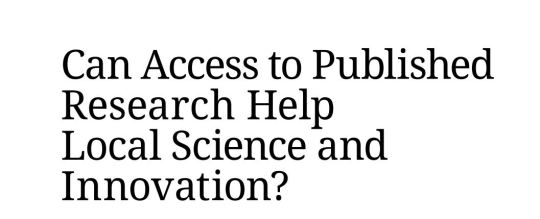
Low-cost access to information can drive research and clinical trials in developing economies and contribute to SDGs. But different regions are affected in different ways. So how can low-performing institutions catch up?
So far, the public debate on access to medicine, neglected diseases, and patent-protected technology has underplayed the potential of access to information for economic development. Similarly, earlier research has revealed a startling gap between lower- and higher-income countries in terms of access to knowledge, with over half of medical institutions having had no subscriptions to academic literature in lower-income countries.
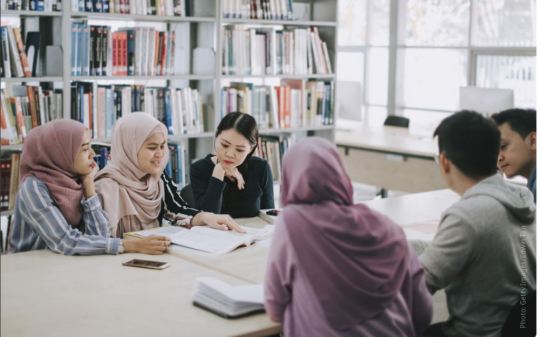
Several UN agencies and major academic publishers launched the Research
For Life (R4L) initiative to fill this gap. The World Health Organization (WHO) runs Health InterNetwork Access to Research Initiative (Hinari), one of fiveprograms under the R4L umbrella. It provides free or low-cost access to academic literature to at least 270,000 researchers in over 100 developing economies. This is for this WHO-led program alone. The entire initiative includes more than 21,000 peer-reviewed journals, 69,000 e-books and 115 data and other sources. Focusing on Hinari, a new WIPO research paper carried out empirical analysis of millions of data points to understand the strengths and weaknesses of the program. It is the first study to link access to scientific publications in developing countries to welfare along the science-to innovation pipeline. The report shows a local increase in health science publications of up to 75% after joining Hinari. Likewise, involvement in international clinical trials grew
by over 20%, suggesting that research and innovation in local institutions improved. Screening over 36 million scientific papers in PubMed, a repository of health science, the study found more than 167,000 papers coauthored by local researchers in developing economies, which cited clinical trials conducted worldwide over 30 years.

However, this uptick in science publishing and clinical trials only partially translated into global patents and inventions. The study attributes this to developing countries often lacking infrastructure and funding to transfer new findings into patented technologies. This gap reveals the remaining challenges in developing innovation and IP systems. Moreover, the study also finds that local context matters. Institutions in specific regions and those that already had a high research performance benefited most from the Hinari program. This also means that it is harder for others to catch up, despite better access to information.
Access to global knowledge counts on the ground
Empowering local researchers by providing access to information is
essential to their work. Researchers tend to target diseases that affect the local population and may be overlooked by researchers abroad. Enabling such access may help innovation in neglected diseases, mainly by connecting local teams to the global knowledge base. Aside from increased scientific activity, R4L also reports direct effects from Hinari regarding medical practice and patient care. The initiative quotes Dr. Nguyen Duc Chinh from Viet Duc Hospital, Hanoi, Viet Nam: “Good research, in short, leads to better patient care.” The doctor relied heavily on Hinari for his PhD on intestinal TB and surgical treatment. TB is prevalent in Viet Nam, but there is a relative lack of information on intestinal TB. “With the information and knowledge we obtain,” he says, “we feel more confident in practicing and implementing respected medical expertise from around the world.” Dr. Sami Hyacinthe Kambire at Kamboinsé Research Station, Ouagadougou, Burkina Faso, also found his research progressing faster and wrote grantwinning funding proposals thanks to Hinari. Before his institution adopted R4L, Dr. Kambire often devoted considerable time to research already
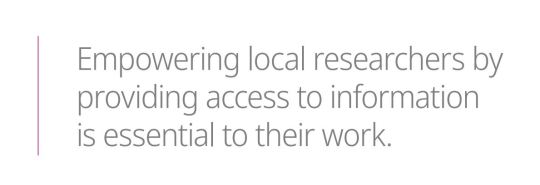
performed elsewhere. The initiative helped reduce these duplicative
research efforts in global health sciences and increase the quality of local teaching and education.
Access to information affects institutions differently
Despite the impacts, the study also found that the program effects differed for different parts of the world. Research institutions in the Carribean, Central Asia, Europe and Latin America benefited the most in generating new scientific knowledge. On average, their academic paper output increased by 80–100%. Regarding clinical trials, program participation is most impactful for East Asia, the Pacific, the Middle East and North Africa. Trial activity rose by up to 35% at institutions in these regions. That does not mean other regions did not gain from the program, but the impact has been less pronounced.
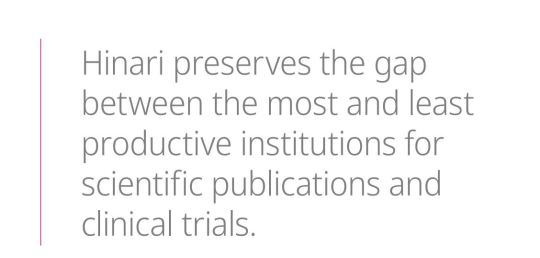
However, there are also institutional differences. Notably, the study
authors wanted to avoid comparing apples to oranges, because high- and low-performing research institutions differ. The high performers might be more likely to adopt the Hinari program in the first place. Seeing more publications might also be an outcome of the institutionsʼ selection into the program rather than an outcome of the program and better access to knowledge on the ground. To reveal the causal effects rather than mere correlations, the study compares different fields. This means health sciences supported by the program are matched against other research fields not supported by Hinari but conducted at the same institution.
How to make the most of access to information
Having ruled out the factors described above, the report suggests that program management could improve in two ways. First, it shows that already productive institutions benefit more from Hinari. For example, research institutions that have previously published academic papers see an average 60–70% increase in their publications after joining. This increase is only around 40% for institutions that rarely published scientific works previously. This suggests that Hinari preserves the gap between the most and least productive institutions for scientific publications and clinical trials. Under these conditions, the least productive institutions are, all else being equal, less likely to catch up. Still, the study ultimately supports the view that the Hinari program and the R4L initiative contribute to achieving the SDGs. They help boost research
and innovation capacity in developing economies and improve health
services (SDG 3) and education quality (SDG 4) at local institutions. They also aim to build industry, innovation and infrastructure, thus encouraging decent economic growth (SDGs 8 and 9).
The R4L initiative is also an excellent example of how private–public
initiatives can make a difference. It joins private sector stakeholders from
the global publishing industry and research institutions in the UN member states in a win–win situation. For research institutions, the initiative provides a practical solution. Their libraries and labs often need to be better resourced, and R4L improves access to information for students and researchers. It is also a smart way for industry stakeholders to show their corporate social responsibility and enhance their social impact in developing economies. It could also help grow local demand and the customer base in the long term.
Moreover, easing access to published research through initiatives like Hinari and WIPOʼs Access to Research for Development and Innovation (ARDI) program can significantly affect research output and contribute to desired social and economic outcomes laid out in the SDGs. UN agencies like the WHO and WIPO have been vital matchmakers. However, addressing existing gaps through schemes such as WIPOʼs Technology and Innovation Support Centers (TISCs) may help build local infrastructure and contribute to a vibrant IP and innovation system. In conclusion, the reportʼs findings on success and remaining challenges may inform stakeholdersʼ decisions to renew or change their commitment to R4L beyond 2025.

#patent-protected technology#Published Research#Local Science and Innovation#research and clinical trials#patented technologies#world i.p. day#26 april#R4L initiative#sdg3#sdg4#sdg8#sdg9#Technology and Innovation Support Centers (TISCs)#Access to Research for Development and Innovation (ARDI) program#ip and the sdgs
0 notes
Text
High-Level Meeting on Sustainable Transport - General Assembly, Sustainability Week, 78th session.
The high-level meeting will highlight sustainable and effective solutions to improve the balance between economic, social, and environmental dimensions of sustainable transport, to take full advantage of sustainable transport in accelerating the implementation of the 2030 Agenda for Sustainable Development.
Opening
Ministerial segment
Interactive multi-stakeholder panel: Enhancing intermodal transport connectivity and developing socially inclusive and environmentally friendly transportation
Closing segment
Sustainable transport systems remain crucial for sustainable development. They support economic growth, facilitate global supply chains, including the delivery of goods and services to rural and urban communities, enhance international cooperation and trade, connect people and communities to jobs, schools and health care, and thus provide all with equal opportunities.
The meeting will be open to Member States and Observers, the United Nations system, ECOSOC-accredited non-governmental organizations and other relevant stakeholders.
Related Sites and Documents
UNGA Sustainability Week
Concept Note
Watch the High-Level Meeting on Sustainable Transport - General Assembly, Sustainability Week, 78th session

#choosesustainability#united nations general assembly#unga78#UNGAsustainabilityweek#sustainable transport#transport system#high-level meeting#ChooseSustainability#SustainableTransportation#urban transport#rural transport#high-level event#resilient transport#road infrastructure#sdg9#sdg11
0 notes
Text
Buy, build, or renovate arts and cultural facilities.

Building for the Arts (BFA) is a program that awards state grants to to buy, build, or renovate arts and cultural facilities. It is managed by the Washington State Department of Commerce. These capital project grants can cover up to 33% of the total costs for construction.
2024 is an application year for Building for the Arts. Join ArtsWA for a series of free Webinars!
Building for the Arts session 1: Building for the Arts 101 | Recorded on March 11, 1:00 p.m.
Building for the Arts session 2: Building a Good Plan | Recorded on March 18, 1:00 p.m.
Building for the Arts session 3: Building a Strong Application | Recorded on March 25, 1:00 p.m.
#Building for the Arts (BFA)#Washington State Department of Commerce#nonprofit community-based organizations#webinars#architecture#sdg9#sdg11
1 note
·
View note
Text
Assessing the progress of all 193 United Nations Member States on the SDGs.

Sustainable Development Report 2023 ''Implementing the SDG Stimulus'' Read the full report
#SDG Stimulus#globalgoals#agenda 2030#sustainable development goals#sdg2#sdg8#sdg11#sdg4#sdg3#sdg6#sdg10#sdg12#sdg13#sdg14#sdg15#sdg16#sdg17#sdg5#sdg1#sdg9#SDG Indicator
0 notes
Text
Accelerating Multilateralism with Transformations in Science Policy Practice Interfaces.
This side event outlines the crucial role that multi-lateral Science-Policy-Practice Partnerships play in building global capacities to implement the 2030 Agenda for Sustainable Development.
Side Event at the SDG Action Weekend organized by United Nations Sustainable Development Solutions Network (SDSN) , Permanent Mission of Ireland to the UN, Permanent Mission of Zealand to the UN, UNESCO and International Science Council (ISC).
To maximize the SDG Summit's impact, the Secretary General is convening an SDG Action Weekend, which will generate opportunities for stakeholders, United Nations entities, and Member States to convene inside the United Nations Headquarters and set out specific commitments and contributions to drive SDG transformation between now and 2030.
The SDG Action Weekend will consist of the SDG Mobilization Day on Saturday, 16 September, and the SDG Acceleration Day on Sunday, 17 September at UNHQ in New York.
The SDG Action Weekend includes a select number of high-level side-events identified through an open call that concluded in August. They are jointly organized by coalitions of Member States, UN agencies and other international organizations, and global stakeholder networks.
#multilateralism#science & technology#United Nations Sustainable Development Solutions Network (SDSN)#Permanent Mission of Ireland to the UN#Permanent Mission of Zealand to the UN#UNESCO#Side Event#International Science Council (ISC)#sdg9#sdg17#Science policy#sustainable development goals#agenda 2030
1 note
·
View note
Text
Women-led Cities: Bringing Gender Responsive Actions, Solutions and Partnerships from the Local Level to Scale.
The Women-led Cities side-event will discuss how women leaders of businesses, cities and communities can join forces to drive positive local transformation through inclusive leadership, economic empowerment and reduced inequality.
Side Event at the SDG Action Weekend organized by UN-Habitat, UNCDF, Ellaimpacta, The Gambia, Bangladesh, UCLG.
To maximize the SDG Summit's impact, the Secretary General is convening an SDG Action Weekend, which will generate opportunities for stakeholders, UN entities, and Member States to convene inside the United Nations Headquarters and set out specific commitments and contributions to drive SDG transformation between now and 2030.
The SDG Action Weekend will consist of the SDG Mobilization Day on Saturday, 16 September, and the SDG Acceleration Day on Sunday, 17 September at UNHQ in New York.
The SDG Action Weekend includes a select number of high-level side-events identified through an open call that concluded in August. They are jointly organized by coalitions of Member States, UN agencies and other international organizations, and global stakeholder networks.
#Local transformation#sdg10#sdg9#sdg11#sdg action#inclusive leadership#economic empowerment#reduced inequality#sdg8#urban areas#cities#sustainable cities#un-habitat#UNCDF#uclg#towns
0 notes
Text
Opening plenary (SDG Action Weekend, Mobilization Day).
As the opening to SDG Action Weekend, the opening plenary of the Saturday proceedings will emphasize the urgency of this moment. Halfway to the 2030 Deadline, we are not halfway there –many goals remain off-track and global economic, geopolitical, and environmental headwinds threaten progress in other areas.
The 2030 Agenda is a promise, not a guarantee, and humanity is in the hotseat. In the face of these challenges, participants will be reminded by speakers that transformation, at scale, is possible. We have the right tools and capabilities but now we need everyone, individually and collectively, to channel these resources more efficiently to deliver on the SDGs. This session will feature a keynote speech from a former Head of State, providing a sober reality check of the moment and emphasizing the possibility for us to achieve our promise. To close, an empowering performance from Yemi Aladewill set an uplifting tone as stakeholders head into the programming of SDG Mobilization Day.
---
To maximize the SDG Summit's impact, the Secretary General is convening an SDG Action Weekend, which will generate opportunities for stakeholders, UN entities, and Member States to convene inside the United Nations Headquarters and set out specific commitments and contributions to drive SDG transformation between now and 2030.
The SDG Action Weekend will consist of the SDG Mobilization Day on Saturday, 16 September, and the SDG Acceleration Day on Sunday, 17 September at UNHQ in New York.
The SDG Mobilization Day (16 September) will create an opportunity for stakeholders from all sectors to convene inside the United Nations Headquarters and mobilize towards an ambitious SDG Summit and UN General Assembly High-Level Week.
The SDG Acceleration Day (17 September) will be centred around the UN High-Impact Initiatives
The SDG Summit on 18-19 September will mark the mid point of the SDGs. It must secure the breakthroughs and momentum needed to change course and achieve the SDGs by 2030. To maximize the Summit's impact, the Secretary General is convening an SDG Action Weekend, which will generate opportunities for stakeholders, UN entities, and Member States to convene inside the United Nations Headquarters and set out specific commitments and contributions to drive SDG transformation between now and 2030.
#sdg1#sdg2#sdg3#sdg4#sdg5#sdg6#sdg7#sdg8#sdg9#sdg10#sdg11#sdg12#sdg13#sdg14#sdg15#sdg16#sdg17#globalgoals#sustainable development goals#stakeholders#sdg action#opening plenary#plenary session
0 notes
Text
Roundtable 3 - For the well-being of the communities.

International Day of Cooperatives 2023 "Cooperatives: Partners for Accelerated Sustainable Development."

0 notes
Text
Progress towards the Sustainable Development Goals: Towards a Rescue Plan for People and Planet.

The present report on progress towards the Sustainable Development Goals is submitted in response to General Assembly resolution 70/1, Transforming Our World: the 2030 Agenda for Sustainable Development.
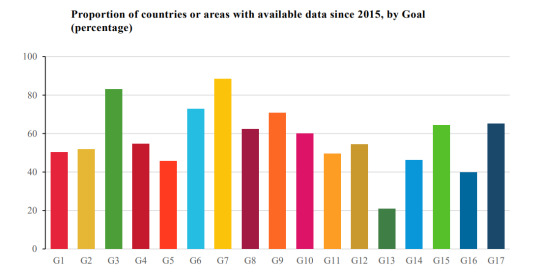
At the mid-way point towards 2030, this Special Edition report provides an update on progress made since 2015 against the global SDG indicator framework. It finds that many of the SDGs are moderately to severely off track and puts forward five major recommendations to rescue the Sustainable Development Goals and accelerate implementation between now and 2030, for Member State consideration in advance of the SDG Summit.
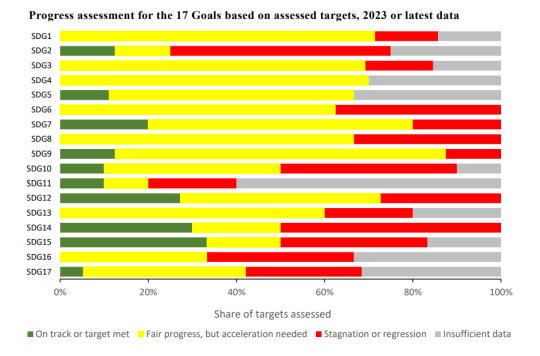
#2030 Agenda for Sustainable Development#Member states#SDGs#Global Goals#Agenda 2023#sdg1#sdg2#sdg3#sdg4#sdg5#sdg6#sdg7#sdg8#sdg9#sdg10#Sdg11#sdg12#sdg13#sdg14#sdg15#sdg16#sdg17
0 notes
Text
Galvanizing MSMEs worldwide by supporting women and youth entrepreneurship and resilient supply chains.
(Part 2) micro-, small and medium-sized enterprises Day 2023
Multiple simultaneous shocks and crises have disturbed the global working environment for entrepreneurs and micro-, small and medium-sized enterprises (MSMEs). In addition, conflicts, commodity dependence, geopolitical tensions, and pandemics drive social and economic instability, making MSMEs extremely vulnerable to rising inflation and supply chain disruptions.
Among the most vulnerable, women- and youth-owned enterprises are often at risk of external shocks. This is when the percentage and overall number of business formations by women and youth are increasing worldwide. However, facing limited access to affordable finance, capacity-building support, partnership networks, and global markets, women and young entrepreneurs need help to overcome the numerous challenges that frequently stifle the growth of their businesses, confining many of them to informality or necessity entrepreneurship.
Policies that strengthen capacities and support MSMEs development and entrepreneurship for women and youth need to be at the forefront to address those challenges, lower and remove barriers, and provide an operating environment for women- and youth-owned businesses to grow, thus contributing to the full achievement of SDGs 1, 4, 5, 8, 9, 10 and the "leave no one behind" promise of the 2030 Agenda for Sustainable Development and its Sustainable Development Goals.
This MSMEs day will also focus on supporting resilient supply chains to ensure workers and the environment benefit. Supply chains are a critical component of global trade and commerce, and conflicts, disasters, and pandemics can quickly impact their functioning, increasing costs and making transactions more difficult. Therefore, policymakers and businesses must join forces to ensure economically viable, socially, and environmentally sustainable supply chains.
(Part 2) micro-, small and medium-sized enterprises Day 2023
A/RES/71/279
#SDG1#SDG4#SDG5#SDG8#SDG9#SDG10#women- and youth-owned businesses#msmeday#panel discussion#agenda 2030
0 notes
Text
2nd session of the UN-Habitat Assembly - Day I.

The second session of the United Nations Habitat Assembly will be held from 5 to 9 June 2023 in Nairobi. Kenya. The theme of the session is "A sustainable urban future through inclusive and effective multilateralism: achieving the Sustainable Development Goals in times of global crises."
#un-habitat#habitats#agenda 2030#new urban agenda#human settlements#sustainable urban development#urban sustainability#sdg7#sdg6#sdg9#sdg11
0 notes
Text
Partnerships and cooperation for water, industry and energy.
Industry has the capacity to advance responsible practices and devise market-based solutions to accelerate progress towards the Sustainable Development Goals (SDGs) at scale.
Collective action, in the form of partnerships and coalitions, increasingly with non-traditional partners, is vital where desired outcomes cannot be obtained through unilateral action alone. Commitment to shared goals and a recognition of the potential for trade-offs between company interests and broader public benefits are essential ingredients of success.
Companies within industries that rely heavily on water for their core business – such as manufacturing of goods or production of inputs and raw materials – have become increasingly attuned to water stress and the risks it poses to business interests. As a result, many companies are exploring and testing ways to reduce or mitigate water risks across their business and supply chains.

Collective actions allow companies to develop new skills and knowledge, such as greater understanding of community needs and values, and enhance their ability to connect with government actors and non-governmental organizations. Industry is in a unique position to lead on the collective action front, being very familiar with strategic partnerships and cooperation and their ability to produce win–win outcomes in core business areas.
In recent years the increased value of adding environmental, social and governance and water stewardship scopes to such arrangements has become very evident – not only in the commercial sense but also in the broader context of overall water sustainability to provide beneficial results for all parties. While leadership by individual companies is necessary to accelerate action toward SDG 6, it is not sufficient to achieve this goal.
Collective action, while not a panacea, is “needed among companies themselves, working together along global supply chains and on a precompetitive basis in specific industry sectors, issues and locations. It will also be needed on a cross-sector basis among companies, governments and civil society organizations”. Businesses anticipating that future in the strategic choices they make today are more likely to thrive and unlock the opportunities that a more environmentally stable and socially inclusive planet can bring.
Industrial water consumption
19% of the world’s freshwater withdrawals is used by industry and energy together
70% of the world’s freshwater use and pollution are caused by 7 major sectors - food, textile, energy, industry, chemicals, pharmaceuticals and mining
17% of total water consumption in high-income countries comes from industrial water withdrawal, while only 2% in low-income countries.
49% of all water consumption in the European Union is meant for industrial production.
Only 4% of water consumption in the Middle East and North Africa is meant for industrial production.
47% of water consumption in South Asia is meant for industrial production, and the region is experiencing high water stress
#Water and Energy#commercial water#industrial water#water supply#SDG7#SDG9#SDG11#SDG13#UNESCO#sustainable energy#rural areas#urban areas#partnerships and cooperation#water management#water partnerships
0 notes
Text
(1st meeting) 8th Multi-Stakeholder Forum on Science, Technology and Innovation for the Sustainable Development Goals.
Welcome and Opening Ministerial session under the theme "Innovating to deliver the SDGs" Session 1: Strengthening trust in science and technology. The STI Forum will facilitate discussions on science, technology and innovation cooperation in support of the SDGs. In addition to providing the mandated inputs for the High-Level Political Forum on Sustainable Development to be held from 10 to 19 July 2023, the Forum will also take a broader look at the contribution of STI to the achievement of all the SDGs in recognition of the September mid-term review of SDG progress.
1 note
·
View note
Text
New green industrial age can be the breakthrough for Sustainable Development Goals.
Amid growing food and energy crises, an uncertain global economic outlook, and the escalating impacts of climate change, the UN today said that a sustainable industrial transformation is needed to close the widening development gap between countries, meet climate targets and achieve the Sustainable Development Goals.
The 2023 Financing for Sustainable Development Report: Financing Sustainable Transformations says urgent, massive investments are needed to accelerate transformations including in electricity supply, industry, farming, transportation, and buildings.
“Without the means to invest in sustainable development and transform their energy and food systems, developing countries are falling even further behind,” United Nations Secretary-General António Guterres said in the foreword to the report. “A two-track world of haves and have-nots holds clear and obvious dangers for every country. We urgently need to rebuild global cooperation and find the solutions to our current crises in multilateral action.”
According to the report some of the necessary changes are already taking place. The energy crisis caused by the war in Ukraine has spurred investment in global energy transition, which skyrocketed in 2022 to a record $1.1 trillion. Energy transition investments surpassed fossil fuel system investments for the first time in 2022, but these are almost all in China and developed countries.
The 2023 Financing for Sustainable Development Report finds that most developing countries do not have the resources for investment, unlike their developed counterparts. Climate change, Russia’s invasion of Ukraine, the COVID-19 pandemic, and debt payments up to two times higher than in 2019 have combined to put massive fiscal pressures on most developing countries. This limits their ability to invest in sustainable transformation.
In developed countries in 2020 and 2021, for example, post-pandemic recovery spending was $12,200 per capita. This was 30 times higher than for developing countries ($410), and 610 times higher than for least developed countries ($20).
“Without delivering a reformed international financial system while scaling up investments in the SDGs, we will not deliver on our shared commitment to the 2030 Agenda for Sustainable Development,” said United Nations Deputy Secretary-General Amina Mohammed. “The good news is that we know what to do and how to do it. From launching critical transformations in energy, food and education to ushering in a new green industrial and digital age—we all must quicken the pace and leave no one behind.”
The 2023 Financing for Sustainable Development Report notes that industrialization has historically been a vehicle of progress, leading to economic growth, job creation, technological advancement, and poverty reduction. The report calls for a new generation of sustainable industrial policies, underpinned by integrated national planning, to scale up investments and lay the foundation for the needed transformations. Many opportunities for inclusive growth exist in agroindustry, green energy, and manufacturing.
The recent rapid uptake in technology points to the possibilities for an equally rapid transition to sustainable industrialization and growth. Between 2021 and 2022, 338 million more people used the Internet regularly, an increase of approximately 38,600 additional people every hour. Furthermore, in regions with high-quality connected services, 44 per cent of all the companies are exporters, in contrast to only 19 per cent of firms where Internet services are weaker.
However, manufacturing capacity remains uneven. In least developed countries in Africa, manufacturing value added, instead of doubling as per the SDG target 9.2, fell from around 10 per cent of GDP in 2000 to 9 per cent in 2021. It will take targeted policies to build the domestic productive capabilities to achieve low-carbon transitions, create decent jobs, and boost economic growth, while ensuring gender equality.
To deliver the necessary resources for this transformation, the 2023 Financing for Sustainable Development Report calls for a combination of strengthening tax systems, enabling and catalyzing private investment, and scaling up of international public investment and development cooperation. Changes to the international financial architecture are also needed to raise sufficient resources.
The report notes that the international system is currently undergoing the biggest rethink across international finance, monetary, trade, and tax systems since the Bretton Woods Conference in 1944. As international institutions work to adapt to the rapidly evolving needs of countries, the report warns that if reforms are piecemeal, incomplete, or fail to take the SDGs into account, sustainable development will be unachievable.
A reformed, effective international financial architecture to deliver for sustainable transformation must include revised frameworks for:
International tax norms, including rules for taxing digitalized and globalized business that meet the needs of developing countries;
Policy and regulatory frameworks to better link private sector profitability with sustainability;
Evolving the scale and mission of the development bank system;
A loss and damage fund on climate change, which needs to be operationalized quickly;
Debt relief and major improvement to the international debt resolution architecture – given that 60 per cent of low-income countries are in or at risk of debt distress;
Multilateral trade rules to revise the approach to and resolve current tensions on green subsidies.
“We have the solutions to avoid a lasting sustainable development divide, and prevent a lost decade for development,” said UN Under Secretary-General Li Junhua, head of the Department of Economic and Social Affairs, which led the production of the inter-agency report. “We must find the political will to overcome the rising political tensions, splintering of inter-country alliances, and worrying trends towards nationalism and seize the moment now to urgently invest in our common future.”
– ENDS –
Notes to Editors:
The 2023 Financing for Sustainable Development Report: Financing Sustainable Transformations is a joint product of the Inter-agency Task Force on Financing for Development, which is comprised of more than 60 United Nations Agencies and international organizations. The Financing for Sustainable Development Office of the UN Department of Economic and Social Affairs serves as the substantive editor and coordinator of the Task Force, in close cooperation the World Bank Group, the IMF, World Trade Organization, UNCTAD, UNDP and UNIDO. The Task Force was mandated by the Addis Ababa Action Agenda and is chaired by Mr. Li Junhua, United Nations Under-Secretary General for Economic and Social Affairs. The full copy of the report will be available at https://developmentfinance.un.org/fsdr2023 on 5 April 2023.
The report forms the basis for discussions at the ECOSOC Forum on Financing for Development, where Member States discuss measures necessary to mobilize sustainable financing. Negotiations based on the report are ongoing. The report also informs the SDG Investment Fair, a platform which brings together government officials and investors for sustainable investment opportunities that support the achievement of the SDGs.
The report covers, among others, areas of the global economic context; trade; debt, private business and finance; technology; and international development cooperation.
***
#2023 Financing for Sustainable Development Report#SDG9#Industrial sector#Green Industrial Age#industrialization#agroindustry#green energy#manufacturing#Sustainable Development Goals
0 notes
Text
The overall performance of all 193 Member States.
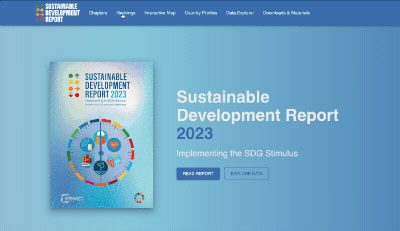
The 2023 Sustainable Development report assesses the progress of all 193 United Nations Member States on the SDGs: This year, Finland, Sweden and Denmark top the rankings. In addition to overall scores, we also feature a spillover index that tracks countries' positive and negative impacts abroad. View Rankings & Scores.
#globalgoals#agenda 2030#sustainable development goals#sdg2#sdg8#sdg11#sdg4#sdg3#sdg6#sdg10#sdg12#sdg13#sdg14#sdg15#sdg16#sdg17#sdg5#sdg1#sdg9#SDG Indicator
0 notes
Photo
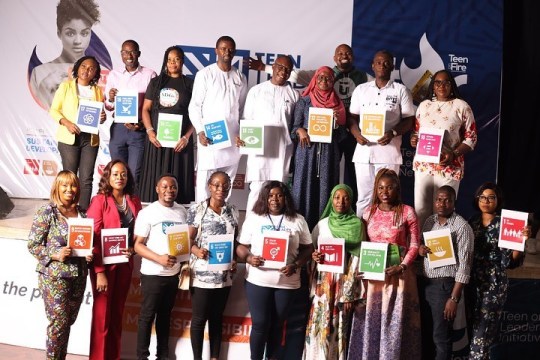
✨SOWING SEEDS OF GREATNESS. 💎Our teenagers today will be the leaders of tomorrow and the seeds we sow in them today will determine the type of fruits they will bear in the future. Today, I was proud to be one of the facilitators that worked with Teajay Chunu @unusualteajay in executing his great vision Teen Leader Shift Conference tagged My Nation, My Responsibility in the city of Abuja. @mytofnation 🎤I was in charge of helping the teenagers from various schools in the state brainstorm on the issues of SDG 9 - Industry, Innovation and Infrastructure. 💜I was so proud of the young delegates as they confidently shared their ideas with me and I am assured Nigeria has a bright future if we can only be more diligent in guiding these bright minds the right way. 📌Keep sowing seeds today because at the appropriate time, if you nurture them properly in a fertile ground, you will reap a mighty harvest. 📣The most fertile ground available is THE MIND; YOURS AND MINE. My name is Madame Merola, The B.A.N.G Creator and I ignite people to fulfill their God Ordained Legacy and Dreams (G.O.L.D) Godfidently. XoXo from #madamemerola #thebangcreator #mentoringteens #teenconference #sdg9 #transforminglives #transformingminds #igniter #sowingseedsofgreatness #facilitator #abujaconference #youthempowerment #nigeriaisblessed #nigerianyouth (at Sow Your Seed Today) https://www.instagram.com/p/Cn0EEdUDJZv/?igshid=NGJjMDIxMWI=
#madamemerola#thebangcreator#mentoringteens#teenconference#sdg9#transforminglives#transformingminds#igniter#sowingseedsofgreatness#facilitator#abujaconference#youthempowerment#nigeriaisblessed#nigerianyouth
0 notes